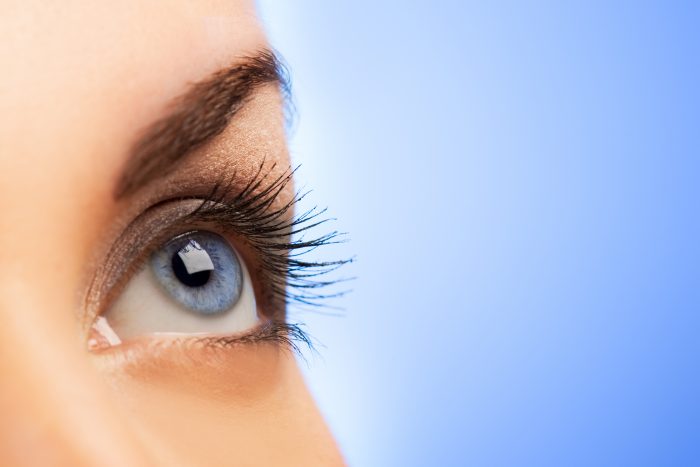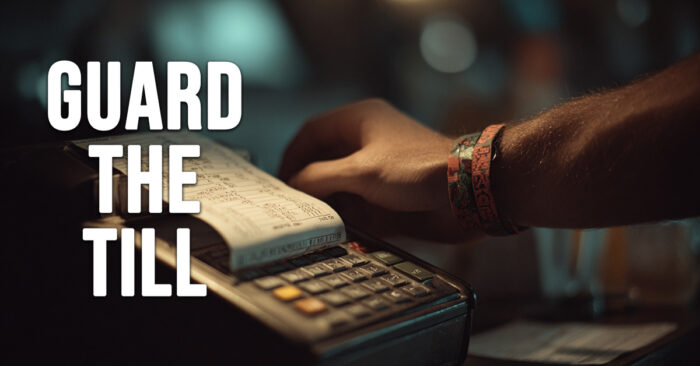Relieving Your Retina

You wake up in the morning to that annoying sound of your alarm, open your eyes to that bright screen, squinting as you press snooze. You wake up, check up on all your social media posts, emails, text messages, then get ready for work. You get to work, where you stare at your computer for eight hours—per day. After you leave, you spend another hour scrolling through your cell phone. The rest of your evening is spent binge-watching your favorite Netflix series. When it gets late, you go to bed, so that you can get enough rest to wake up the next day and have another very similar day.
This is true about the average American on a daily basis. Whether it be research on a computer screen, constant social media updates, or working in front of a computer for eight hours straight, we spend the majority of our time staring at the blue light that comes from these devices.
Blue light can be beneficial for us—in moderation, just like most other things. It can boost alertness, improve memory and cognitive function, and elevate mood. However, with so many technologies, studies are beginning to show concerns with too much blue light.
Your eyes are affected by blue light because it passes through the cornea and lens of your eye, directly reaching the retina. It’s possible this could result in premature aging of your eyes. Too much blue light can damage your retina, and can also cause what’s known as Digital Eyestrain. The symptoms of Digital Eyestrain are fatigue, dry and sore eyes, difficulty focusing. The strain on your eyes can cause headaches and blurred vision in your days to come.
Scientists aren’t sure of all the long-term effects of digital eyestrain.
Prevention:
- Wear protection—no, not that kind of protection.
There are filters to apply to your computer screen to lessen the amount of blue light your eyes are receiving, as well as glasses you can wear to protect your eyes.
- Make sure your screen is at the right level, and that your computer’s resolution is crisp enough to prevent straining your eyes trying to read.
- Use what’s known as the 20-20-20 rule: Take a break from working every 20 minutes, stare at something 20 feet away for 20 seconds. This will help you regain focus and prevent damage to your retina.
- Try to be more conscientious of the effects of your constant cell-phone and computer use, for your own
 By: KayLynn
By: KayLynn
Do you have questions about your insurance? Find an insurance agent near you with our Agent Finder
Search All Blogs
Search All Blogs
Read More Blogs
Cinnamon, Cocoa, and Contentment: The Hygge Approach to December Holiday Feasting
Ditch the stressful feast! Simple, warm, and comforting recipes and rituals to bring the cozy Danish concept of Hygge to your holiday table this December.
Guard the Till: Insuring Your Business Against the Holiday Spike in Employee Theft and Fraud
Internal threats are highest in December. Secure your inventory and cash flow with Commercial Crime Insurance (Fidelity Bonds) to protect against employee dishonesty.
The Family Legacy: Why December is the Time to Name a Trust as Your Life Insurance Beneficiary
Protect your payout. Discover the benefits of naming a Trust as the beneficiary of your life insurance to control distributions and minimize probate delays.
Customizing Cold Protection: Essential Auto Insurance Endorsements for Winter Driving
Standard coverage isn’t enough for winter. Learn about Gap, OEM, and specialized endorsements to fully protect your vehicle and costly winter accessories.
Defrosting Disaster: The Costly Liability of Ice, Water, and Frozen Sidewalks in December
Frozen sidewalks, overflowing sumps: A December guide to home insurance liability and water damage coverage, and how to avoid costly claims.
Tinsel and Tropes: A Cozy Look at Why Classic Christmas Movie Moments Endure
From Zuzu’s petals to the leg lamp: Dive into the nostalgic tropes and timeless comfort of our favorite classic Christmas films.
The Silent Season: Securing Inventory and Operations During Christmas and Year-End Closures
Closing the shop for the holidays? Key business insurance checks for protecting vacant property and high-value inventory from theft and winter damage.
The Most Sustainable Gift: Life Insurance and the Value of Income Continuation Planning
Life insurance ensures the Christmas cheer continues. Practical tips on using income continuation math to calculate the right term policy size for your family.
From Home to Holiday: Securing Your Christmas Road Trip Auto Coverage Checklist
Heading over the river and through the woods? Your Christmas road trip needs an auto insurance checkup, focusing on roadside assistance and UIM coverage.
The Fire Under the Fir: Insuring Against Christmas Tree Calamity and Holiday Fire Risk
Don’t let a dried-out tree ruin Christmas. Essential home insurance tips for fire safety, electrical risk, and candle liability during the holiday season.









